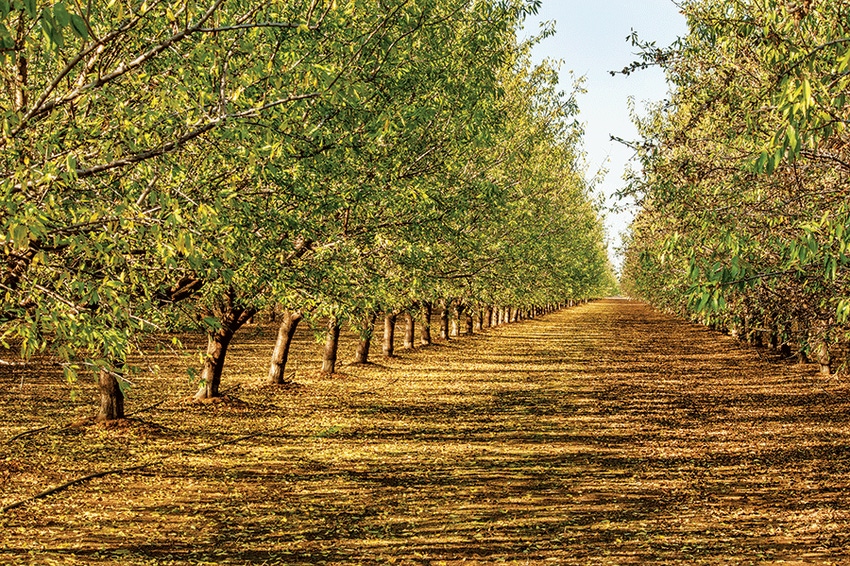
Growers know that evaluating the flowering and fruit set in their almond orchards can help them determine productivity later in the season. But a pair of University of California experts say it can also provide clues that will enable growers to consider the orchard’s productivity years into the future.
Vegetative growth of almond trees has two main components, UC Cooperative Extension advisors Elizabeth Fichtner and Bruce Lampinen explain. They are vegetative shoot growth, which provides the overall architecture of the canopy, and spur production, which generates the tissues that give rise to fruit in subsequent season.
Both components are key to developing an economically sustainable and productive orchard, they write on the university’s Nut, Olive and Prune Programmatic News blog.
GROWTH TIMING
All vegetative and flower buds are formed during the prior season, and almond trees’ chill requirement is usually met by Jan. 1. Growth begins as temperatures rise and bud break ensues, with flower buds giving way to vegetative buds. Vegetative shoots grow uniformly throughout the season, but spur elongation generally happens by April or early May.
Long vegetative shoots support future spur production. During an almond orchard’s early years, long shoot growth is the main component of vegetative development, Fichtner and Lampinen note. On mature trees, vegetative shoot growth occurs under conditions of low crop, high vigor, and in parts of the tree that get lots of light, such as external areas.
Spurs are short, compact vegetative shoots that are always formed on the prior year’s wood, and they remain vegetative for a year or two before flowering, they say. In all, the process of having a vegetative shoot develop spurs that eventually flower may take four seasons.
Here’s where a sort of paradox occurs. Spurs support about 80 percent of the total almond yield in a given year, yet only about 20 percent of the total spur population on a tree supports nut production each year, Fichtner and Lampinen note.
The reason is that, while some spurs remain only vegetative in a given year, others may support as many as five flowers that may develop into single fruit-bearing spurs or multiple fruit-bearing spurs. This helps explain why almond trees are alternate-bearing, since spurs that bear fruit one year tend not to flower or bear fruit the following year.
WATCHING THE GROWTH
In new plantings, almond growers should expect most vegetative growth to be production of long shoots, Fichtner and Lampinen say. While much of the future crop will be produced on spurs, it will take time for bearing spurs to take hold in the canopy, considering that spurs appear on the prior year’s wood and remain vegetative for a year or two before becoming productive.
The advisors urge growers to be patient as the vegetative spurs store carbohydrates that will support future nut development.
To read their full blog post, visit https://bit.ly/2p2VDap
About the Author(s)
You May Also Like






